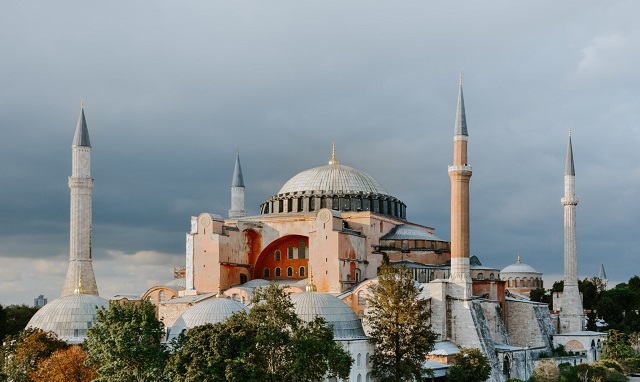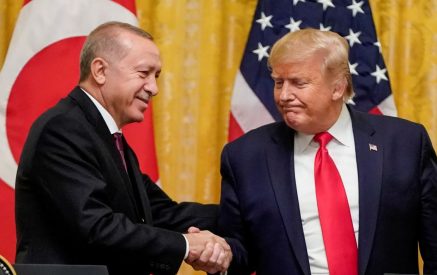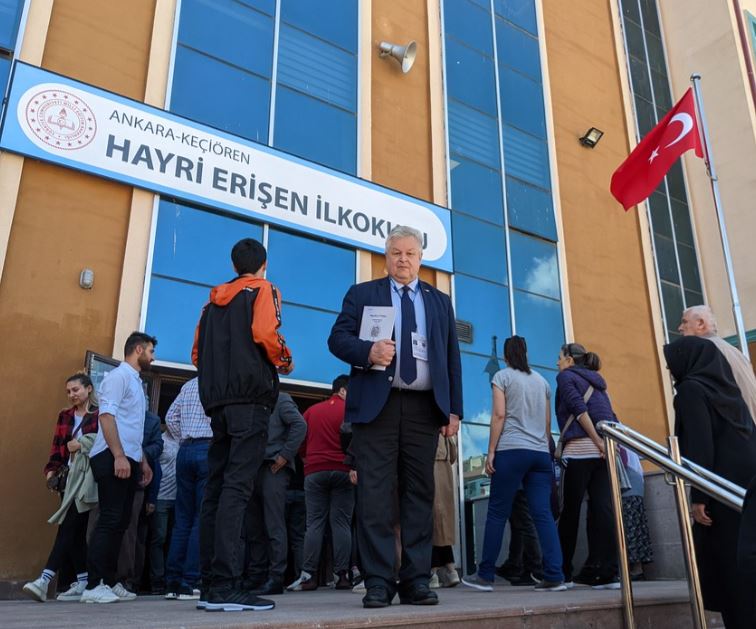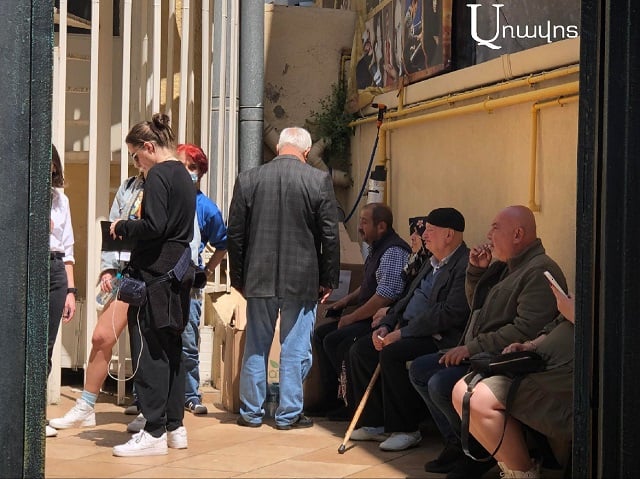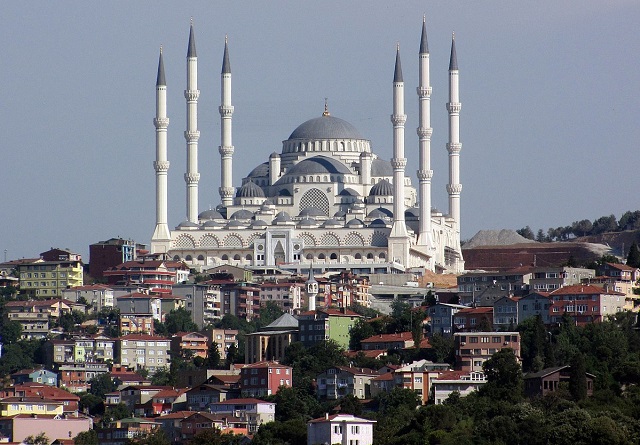To the secularized world, Erdoğan’s decision last year to convert a UNESCO museum into a mosque came as an unpleasant surprise, especially as it was made in a (still) secular country. This decision was generally condemned, but not, surprisingly, by some Christian clerics, like Giles Fraser, Priest-in-Charge of St. Mary’s in south London. For these clerics, secularization is downright demonic, and the idea of making a museum out of a place for worship a sacrilege. In the words of Fraser, “The Hagia Sophia was profaned by secularity in 1935. For secularism is not a way for all religions to share the public space peacefully; it is a systematic and deliberate attempt to drive God out of the public square.” Therefore, Fraser reasoned, “Christians should be delighted” by Erdoğan’s move. Welcoming the end of the Hagia Sophia museum as a victory against secularism, Fraser, and those who think like him, seem oblivious to the underlying motivations for this decision, which are political, not religious. But instrumentalizing religion by politics has always had a very complex history.
The intimate relationship between politics and religion goes back, in fact, to the very beginnings of social organization. Politics was born in a religious arena. The three great monotheistic religions do not differ much in this respect. For Old Testament Judaism, divine laws were given to the chosen people; they were not applicable to the Gentiles. Christianity forged its own model of synchronization between politics and religion. Perhaps the most well-known example occurred during the reign of Justinian I (527-565), the founder of the Hagia Sophia. Justinian managed to establish a legal division between the imperial (imperium) and the clerical authority (sacerdotium), stating (in his imperial laws, Novellae Constitutiones) that the two should be in harmony. On several critical occasions the emperor acted as supreme ruler of the church, thus altering the power balance. Built after the violent suppression of the Nika riots (532 AD), the Hagia Sophia would help to reaffirm and consolidate the political and religious center of Byzantium. Even the architectural form of the building was meant to reflect this programmatic harmony: the circular dome (a symbol of secular authority in classical Roman architecture) would be harmoniously combined with the rectangular form (typical for Christian and pre-Christian temples). Justinian reconfigured the New Jerusalem, bringing “heaven on earth” with a new temple of Solomon, thus also sending the message of having an indestructible power to his internal and external rivals. Therefore, over the centuries, every triumphalist claim over Byzantium would culminate with a ceremonial submission of the Hagia Sophia.

President Erdoğan performing Friday prayer at the Hagia Sophia Grand Mosque, July 24, 2020, Presidency of the Republic of Turkey
Nobody is so naive as to believe that Erdoğan’s entrance into the Hagia Sophia on July 24, 2020 was driven (only) by piety. Istanbul did not urgently need another mosque. One mosque, however huge, was not vital to Muslim believers. In 2013, Istanbul had 3,113 mosques, the most in all of Turkey. The largest mosque in Turkey—Çamlıca Camii—is also located in Istanbul and can accommodate up to 63-thousand people. Completed in 2019, the massive government-sponsored building project faced significant criticism from within Turkey, as there was no real need for this mosque. If Erdoğan’s party failed to obtain enough votes to win the mayor position for Istanbul, perhaps such forceful and visible entrance into Hagia Sophia would bring him more support in what still remains a Kemalist-dominated area.
Read also
Erdoğan could have planned the conversion of the Hagia Sophia for 2023, the year of presidential elections in Turkey, but he could not wait, most likely because he needed a diversion from current economic problems.
Erdoğan’s calculated dramaturgy of the type Make Turkey Great Again with its multiple references to great Ottoman conquerors (such as the inauguration of the first prayer in the former museum) were all following an already set pattern. From the annual national celebrations on May 29 to the promotion of irredentist Ottoman maps, neo-Ottomanism has been an undissimulated presence in recent years. A more subtle example is the controversial film Fetih 1453 (2012). Erdoğan ensured that his attendance of a private screening of the film before its official premiere would be widely publicized. According to director Faruk Aksoy, the movie’s “biggest goal was to show the glorious success” of Turkey. The film, which claims to narrate the conquest of Constantinople from the Ottoman perspective, not only contains numerous historical inaccuracies but also historical revisionism. When Muhammad II triumphantly enters Constantinople and the Hagia Sophia, he is shown as meeting the Byzantines with an attitude of great generosity.
Nothing could be further from the truth. The film—the most expensive and highest-grossing film in Turkish history—was highly appreciated by the Turkish public, becoming the most ever watched film in Turkey in just 18 days. Of course, cinematography allows for varying degrees of fiction and fantasy;1 but when politics pushes for the same fictitious story again and again, we are already talking about propaganda and falsification of the past. We can see this in Erdoğan’s public address as well, when he tries to justify why the Hagia Sophia needs to become a mosque again, invoking the sparing of the lives and liberties of the Byzantines by Muhammad II. The sultan did grant religious freedom to Christians in the vast Ottoman Empire, but not on the day of Constantinople’s conquest, as the film and Erdoğan make us believe, nor in the next days. In reality, the sultan allowed his soldiers to behave as they pleased in the conquered city for three days. So great was the ensuing massacre, however, that the sultan had to recall his soldiers after the first day. The next two days were left for the counting of the slaves and for looting. Only a handful of people from those who took refuge in the Hagia Sophia and survived the slaughter within its walls were eventually spared.
The actual events were thus dramatically different from their cinematic depiction, but also politically through Erdoğan’s “chronicle” of the first Ottoman entry into the Hagia Sophia of 1453, in his televised public address. Erdoğan’s take on “the most glorious chapters in Turkish history” contradicts the scholarly bibliography on the subject, a bibliography recommended by respectable universities in Turkey as well. What happened at the fall of Constantinople, including in the Hagia Sophia, did not in any way bear the mark of generosity, but followed the bloody logic of all conquests: the survivors were sold into slavery, the elder refugees in the Hagia Sophia were slaughtered and the women raped, as evidenced by contemporary chronicles of the event. Contrary to the movie and Erdoğan’s eulogy, the main historical sources of the fall of Constantinople attest to the inferno the conquest brought upon the city. The chronicles of Doukas (1400 -1462), George Sphrantzes (1401-1477), Michael Critobulus (1410-1470) and Laonikos Chalkokondyles (1430-1490) are some of the main sources. Whoever wants to find out what really happened on and after May 29, 1453 needs to ream them. Their rhetoric is not that of the conquerors, but of the victims. Liberty was granted only to the few who managed not to be captured. To speak of a kindness shown to the “fearful and curious” Byzantines, as Erdoğan does in his public address, is a way of mystifying, if not straightforward falsifying, the past.
With the same composure with which it denies the Armenian Genocide, Turkey, at the level of political discourse, now rewrites its history to make it appear more glorious than it was. Just at a time when in the West we are becoming particularly sensitive to the public commemoration of personalities who played a role in the proliferation of slavery, such as in the former confederate states of the US, Erdoğan praises a historical figure who turned at least half of Constantinople’s population into slaves, several of them for his personal use. It is estimated that between 1453 and 1700, 2.5 million slaves lived in the city, with, at a certain moment, almost 20 percent of the population enslaved. It was not until as late as 1846 that the main slave market of Istanbul was closed.
Cinematic propaganda is not an exception in the Turkish film industry. The animated 1983 movie Fatih Sultan Muhammad presents a similarly glorious story of Sultan Muhammad II, and a very toned-down conversion of Hagia Sophia2. Perhaps the animated movie is addressed to innocent viewers, who easily could take for granted the glorious conquest of Constantinople and the conversion of Hagia Sophia into a mosque as a pious event without any mention of the carnage and slavery that ensued the fall of Constantinople. But it is beyond comprehension how a similarly truncated narrative is currently promoted by Netflix in Rise of Empires: Ottoman (2020), co-produced with a Turkish team. The sixth and final episode of the series “Ashes to Ashes” seems to replicate the 1983 animated movie in retelling the story of Muhammad’s triumph over Hagia Sophia. Just like in the animated movie, in the Netflix production Muhammad enters an empty Hagia Sophia alone, thus converting the most wanted building in the world into a mosque.3 The scene is dubbed by interviews with contemporary scholars, making viewers interested in acquiring historical knowledge believe that the series is well documented. But unfortunately, everything depicted here is inaccurate. It is hard to imagine what a second season of this series will look like. If it follows the same type of accuracy, we might see a depiction of Ottomans walking freely and peacefully on the streets of Vienna.
The memory of the fall of Constantinople remained an open wound for Europe, especially for Eastern Christianity and even more so for Greek Orthodoxy. The transformation of what had become the Ayasofya Mosque into a museum after Kemal Atatürk’s decree in 1943 was like an armistice over the centuries between the Ottoman and the European worlds. In a modern and tolerant Turkey, we would have hoped for this transformation to last and expected Istanbul, with its extraordinary pre-Islamic heritage, to play the role (predestined by its geographical position) of a meeting place between Islam and Christianity. Hagia Sophia could have become a space in which the two monotheistic religions could have met not only within the same walls, but also in an authentic interreligious dialogue4 beyond a mere bureaucratic ecumenism.5 Not only an interreligious dialogue, but also an illustration that secularism and religion can go well together in a secular country (likewise, why not in a religious country?). Hagia Sophia could have dreamed to be all three in one: a mosque on Fridays, a church on Sundays and a secular museum during the week. This would not be without precedent, as for example demonstrated by Berlin’s incredible House of One.
Instead, Erdoğan’s populist movement fuels fundamentalist tendencies both in Islam and Christianity. Moreover, this gesture has the potential to rekindle the recent Balkan conflicts between Muslims and Orthodox Christians.
Mustafa Kemal Atatürk’s Turkey seems to have emulated the French model of strict secularism instead of the American one, in which the role of religion in the proper functioning of a secular state is not minimized. And perhaps this last example would have been more appropriate in a country with an Islamic tradition so that ideological antagonisms would not be encouraged. Turkey, until recently a model for the way in which secularism can coexist with Islam, could now become the opposite under Erdoğan’s leadership.
The transformation of the Hagia Sophia into a mosque is thus not only a defiance of the West, but very much a signal to the ummat al-Islām, the worldwide Islamic community. It is indeed an internal affair, as Putin’s spokesman Dmitry Peskov insisted,6 but also an internal business of the Islamic world. Erdoğan indirectly shows to Saudi Arabia’s Mohammed bin Salman and Sunni Muslims in general that, although he does not have Mecca or Medina in his Ottoman custody any longer, he still is in possession of the former coveted capital of Byzantium (about which the Prophet himself predicted that it would one day be conquered) and one of the most important symbols of Christianity. Yet Ottoman sultans were never recognized as absolute leaders of the Islamic world, and many Muslims dislike Erdoğan’s political-Islamic rise. Even some Muslim leaders and scholars have criticized, more or less categorically, Erdoğan’s decision about the Hagia Sophia, and some senior officials in Islamic countries declare that “changing its status will harm its cultural value.”
Set in this wider context, the transformation of this UNESCO monument into a mosque might help us understand Erdoğan’s ambitions, which go beyond museo graphical issues. If his policies in recent years have not said it clearly enough, Erdoğan’s entry into the Hagia Sophia clearly marks an outspoken neo-Ottoman and anti-Kemalist political direction. What will the new Turkey (yeni Türkiye) bring next? Maybe a change of the alphabet (from Latin back to Arabic, which was in use until 1929) or a return to traditional clothing, abolished by Atatürk in the 1920s. Or even more worrisome, an attempt to restore the Ottoman borders? Looking at the evolution of Turkey’s foreign policy, from military interventions in the Middle East, the aggressive claims in the Aegean Sea, the astonishing remark that “Jerusalem is Ours,” to the way in which Erdoğan fueled another foreign conflict in Nagorno-Karabakh, there are reasons for growing concerns about this NATO ally. And one of the greatest concerns for the West is that anti-Kemalism actually means anti-Westernism.
Notes
1. Cinematic propaganda is not an exception in the Turkish film industry. An animation from 1983, Fatih Sultan Muhammad, presents a similarly glorious story of Sultan Muhammad II, and a very down-toned conversion of Hagia Sophia (from min 1:48:00). If the animation is addressed to innocent viewers, which easily could take as granted the glorious conquest of Constantinople, and the conversion of Hagia Sophia into a mosque as a pious event, without any mention of the carnage and slavery that ensued the fall of Constantinople, it is unexpected that a similar story is promoted by Netflix (co-production with a Turkish team): Rise of Empires: Ottoman (2020). The sixth and final episode, “Ashes to Ashes”, seems to reduplicate the 1983 animation in retelling the story of Muhammad’s triumph over Hagia Sophia. Just like in the animation, in the Netflix production (min 0:35:50) Muhammad enters alone an empty Hagia Sophia, dubbed by the contemporary interventions of scholars, fulfilling the conversion of the most wanted building in the world. The viewer who is interested in building historical knowledge through educational documentaries could take as granted that the end of the series is well documented. But, unfortunately, everything depicted here is inaccurate. I don’t dare to imagine what a second season of this series would look like. If they follow the same type of accuracy, we might see a depiction of Ottomans walking freely on the streets of Vienna.
2. From min 1:48:00.
3. Min 0:35:50.
4. Religious plurality seems to be ensured even by the Qur’an, and the conversion of a church or a synagogue into a mosque is not a goal of Islamic teaching. On the contrary, Abrahamic religions enjoy a privileged status in the eyes of Islam. As the Islamic mystic Jalal al-Din Rumi rightly said, “there are a hundred ways to kneel and kiss the ground.”
5. An ideal stated with much vision in the 2007 document A Common Word Between Us and You, signed by 132 Muslim and Christian theologians; it is a vision outlined in the ‘60s by the pioneering document Nostra Aetate of the Second Vatican Council.
6. One of the self-proclaimed great defenders of Christian Orthodoxy tries to deceive us that Erdoğan’s decision is an internal affair, proposing as a solution the construction of a replica (sic) of Hagia Sophia elsewhere. By the same logic of domestic business, the Indian government, which currently has a very strained relationship with Islam, could convert the Taj Mahal mausoleum into a Hindu temple, since it is in Indian territory. The Islamophobia of Hindu nationalists, who demolished the Babri Mahjid mosque, is perhaps higher than the Christianophobia of Turkish nationalists, which Erdoğan seems to be trying to politically revive now.
Florin George Calian
The Hagia Sophia, 2014 (Photo: Adli Wahid/Unsplash)



















































